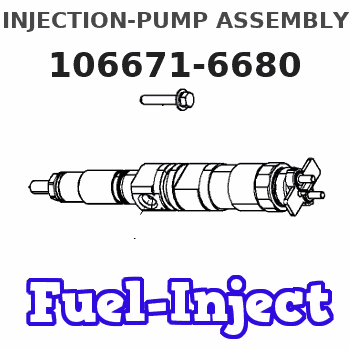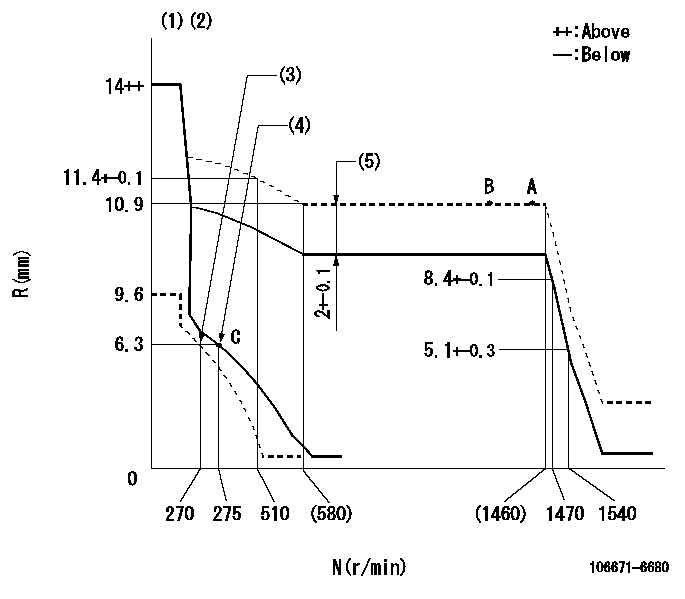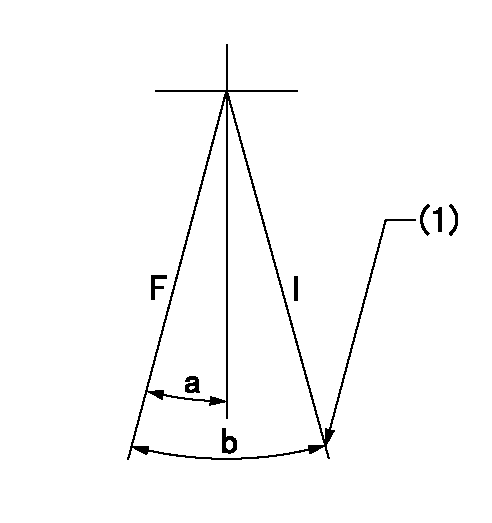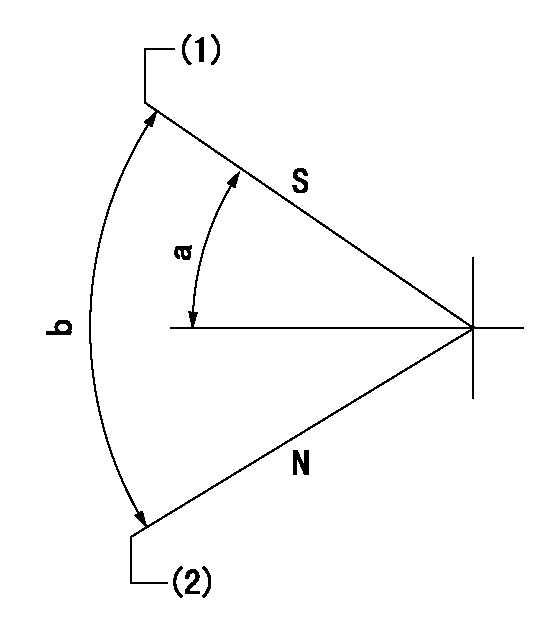Information injection-pump assembly
ZEXEL
106671-6680
1066716680
ISUZU
1156034700
1156034700

Rating:
Cross reference number
ZEXEL
106671-6680
1066716680
ISUZU
1156034700
1156034700
Zexel num
Bosch num
Firm num
Name
Calibration Data:
Adjustment conditions
Test oil
1404 Test oil ISO4113 or {SAEJ967d}
1404 Test oil ISO4113 or {SAEJ967d}
Test oil temperature
degC
40
40
45
Nozzle and nozzle holder
105780-8140
Bosch type code
EF8511/9A
Nozzle
105780-0000
Bosch type code
DN12SD12T
Nozzle holder
105780-2080
Bosch type code
EF8511/9
Opening pressure
MPa
17.2
Opening pressure
kgf/cm2
175
Injection pipe
Outer diameter - inner diameter - length (mm) mm 8-3-600
Outer diameter - inner diameter - length (mm) mm 8-3-600
Overflow valve
134424-3920
Overflow valve opening pressure
kPa
127
107
147
Overflow valve opening pressure
kgf/cm2
1.3
1.1
1.5
Tester oil delivery pressure
kPa
157
157
157
Tester oil delivery pressure
kgf/cm2
1.6
1.6
1.6
Direction of rotation (viewed from drive side)
Left L
Left L
Injection timing adjustment
Direction of rotation (viewed from drive side)
Left L
Left L
Injection order
1-5-3-6-
2-4
Pre-stroke
mm
4
3.97
4.03
Beginning of injection position
Governor side NO.1
Governor side NO.1
Difference between angles 1
Cal 1-5 deg. 60 59.75 60.25
Cal 1-5 deg. 60 59.75 60.25
Difference between angles 2
Cal 1-3 deg. 120 119.75 120.25
Cal 1-3 deg. 120 119.75 120.25
Difference between angles 3
Cal 1-6 deg. 180 179.75 180.25
Cal 1-6 deg. 180 179.75 180.25
Difference between angles 4
Cyl.1-2 deg. 240 239.75 240.25
Cyl.1-2 deg. 240 239.75 240.25
Difference between angles 5
Cal 1-4 deg. 300 299.75 300.25
Cal 1-4 deg. 300 299.75 300.25
Injection quantity adjustment
Adjusting point
A
Rack position
10.9
Pump speed
r/min
1400
1400
1400
Average injection quantity
mm3/st.
128
126
130
Max. variation between cylinders
%
0
-3
3
Basic
*
Fixing the lever
*
Boost pressure
kPa
156
156
Boost pressure
mmHg
1170
1170
Injection quantity adjustment_02
Adjusting point
C
Rack position
6.3+-0.5
Pump speed
r/min
275
275
275
Average injection quantity
mm3/st.
14.5
11.3
17.7
Max. variation between cylinders
%
0
-13
13
Fixing the rack
*
Boost pressure
kPa
0
0
0
Boost pressure
mmHg
0
0
0
Boost compensator adjustment
Pump speed
r/min
700
700
700
Rack position
R1-2
Boost pressure
kPa
36
33.3
38.7
Boost pressure
mmHg
270
250
290
Boost compensator adjustment_02
Pump speed
r/min
700
700
700
Rack position
R1(10.9)
Boost pressure
kPa
143
143
143
Boost pressure
mmHg
1070
1070
1070
Timer adjustment
Pump speed
r/min
1400++
Advance angle
deg.
0
0
0
Remarks
Do not advance until starting N = 1400.
Do not advance until starting N = 1400.
Timer adjustment_02
Pump speed
r/min
-
Advance angle
deg.
0.7
0.7
0.7
Remarks
Measure the actual speed, stop
Measure the actual speed, stop
Test data Ex:
Governor adjustment

N:Pump speed
R:Rack position (mm)
(1)Target notch: K
(2)Tolerance for racks not indicated: +-0.05mm.
(3)Set idle sub-spring
(4)Main spring setting
(5)Boost compensator stroke
----------
K=7
----------
----------
K=7
----------
Speed control lever angle

F:Full speed
I:Idle
(1)Stopper bolt setting
----------
----------
a=15deg+-5deg b=31deg+-5deg
----------
----------
a=15deg+-5deg b=31deg+-5deg
Stop lever angle

N:Pump normal
S:Stop the pump.
(1)Rack position = aa, speed = bb (stamp at delivery)
(2)Normal
----------
aa=1-0.5mm bb=0r/min
----------
a=25.5deg+-5deg b=70deg+-5deg
----------
aa=1-0.5mm bb=0r/min
----------
a=25.5deg+-5deg b=70deg+-5deg
Timing setting

(1)Pump vertical direction
(2)Position of timer's threaded hole at No 1 cylinder's beginning of injection
(3)B.T.D.C.: aa
(4)-
----------
aa=19deg
----------
a=(50deg)
----------
aa=19deg
----------
a=(50deg)
Information:
Test Procedure
System Operation
A contactor is a pressure switch or a contactor is a level switch. Contactors can be adjusted in order to operate at a given temperature or pressure.Contactors are set to shutdown setpoints and monitored by the MMS. When a contactor for the shutdown system closes the MMS secures the engine.
Illustration 1 g00563590
Diagram of a contactor
Illustration 2 g00562905
Schematic of the contactorFunctional Test
Check the electrical connectors and check the wiring.
Bodily contact with electrical potential can cause bodily injury or death.To avoid the possibility of injury or death, ensure that the main power supply has been disconnected before performing any maintenance or removing any modules.
Disconnect the power supply.
Check the electrical connectors and check the wiring for damage or bad connections.
Verify that all modules are properly seated.
Verify the status of the LED on the SLC 5/04.The results of the preceding procedure are in the following list:
All of the components are fully installed. All of the components are free of corrosion. All of the components are free of damage. All of the modules are properly seated. Proceed to 2.
The components are not fully installed. The components are not free of corrosion. The components are damaged. All of the modules are not properly seated. Repair the component. Verify that the repair resolves the problem. STOP.
Check for drift.
Apply pressure or apply temperature. Determine when the contact closes.
Measure the continuity between the common terminal and the normally open terminal. Determine when the contact closes.The results of the preceding procedure are in the following list:
The contact closes when the contact is actuated. Proceed to 3.
The contact does not close when the contact is actuated. Replace the contactor. Verify that the repair resolves the problem. Stop.
Check the contactor for chatter.
Verify that the contactor is adjusted to the original setpoint.The results of the preceding procedure are in the following list:
The contactor does not cycle frequently. Stop.
The contactor cycles frequently. Replace the contactor. Verify that the repair resolves the problem. Stop.
System Operation
A contactor is a pressure switch or a contactor is a level switch. Contactors can be adjusted in order to operate at a given temperature or pressure.Contactors are set to shutdown setpoints and monitored by the MMS. When a contactor for the shutdown system closes the MMS secures the engine.
Illustration 1 g00563590
Diagram of a contactor
Illustration 2 g00562905
Schematic of the contactorFunctional Test
Check the electrical connectors and check the wiring.
Bodily contact with electrical potential can cause bodily injury or death.To avoid the possibility of injury or death, ensure that the main power supply has been disconnected before performing any maintenance or removing any modules.
Disconnect the power supply.
Check the electrical connectors and check the wiring for damage or bad connections.
Verify that all modules are properly seated.
Verify the status of the LED on the SLC 5/04.The results of the preceding procedure are in the following list:
All of the components are fully installed. All of the components are free of corrosion. All of the components are free of damage. All of the modules are properly seated. Proceed to 2.
The components are not fully installed. The components are not free of corrosion. The components are damaged. All of the modules are not properly seated. Repair the component. Verify that the repair resolves the problem. STOP.
Check for drift.
Apply pressure or apply temperature. Determine when the contact closes.
Measure the continuity between the common terminal and the normally open terminal. Determine when the contact closes.The results of the preceding procedure are in the following list:
The contact closes when the contact is actuated. Proceed to 3.
The contact does not close when the contact is actuated. Replace the contactor. Verify that the repair resolves the problem. Stop.
Check the contactor for chatter.
Verify that the contactor is adjusted to the original setpoint.The results of the preceding procedure are in the following list:
The contactor does not cycle frequently. Stop.
The contactor cycles frequently. Replace the contactor. Verify that the repair resolves the problem. Stop.